The Estonian Meistriliiga has been dominated by Flora Tallinn in recent years, with the club winning the league four times in five years. While their achievements were a result of a great team effort, they wouldn’t have been possible without the balanced approach and vision of their young coach, Jürgen Henn.
The manager came in charge of the team at just 30 years old, only to become the longest-serving and the most successful manager in Flora’s history. Despite his coaching career starting with the club’s U19s in 2012/13, nobody expected him to develop into one of the best young coaches in the country’s first tier.
Returning to the club after a short spell as an assistant coach of Estonia’s U21s, he led them to third place in 2018 before winning his first league title in 2019.
He built a team with distinguished tactics and an attack-minded approach that challenged everyone with their movement up front. Their balanced defensive performance, though, made them even more successful, as they had lost only 14 games in six seasons.
The club are focused on playing only with Estonian players, which made Henn’s task even more demanding in terms of creating a good environment and getting the best out of every player. He had focused on and developed something for them to achieve what he wants on the pitch.
The coach has shared previously that his approach to the games is very analytical, and he likes to look at the details, trying to figure out how to improve tactically and what their next move should be.
At 36, after six years as Flora’s head coach, Henn stepped down from the role in search of new challenges.
Our tactical analysis examines Estonian’s tactics at Flora and explains why he might be the next young manager to take over a top European club.
Ball retention and progression
Flora’s dominance in the league has been a reflection of their dominance on the pitch. Their possession-based style of play with a high pass frequency and intense attacking movement made it difficult for their opponents to counteract. Henn’s philosophy included overloading the opposition half and retaining possession there to create goalscoring opportunities and keep them away from their goal.
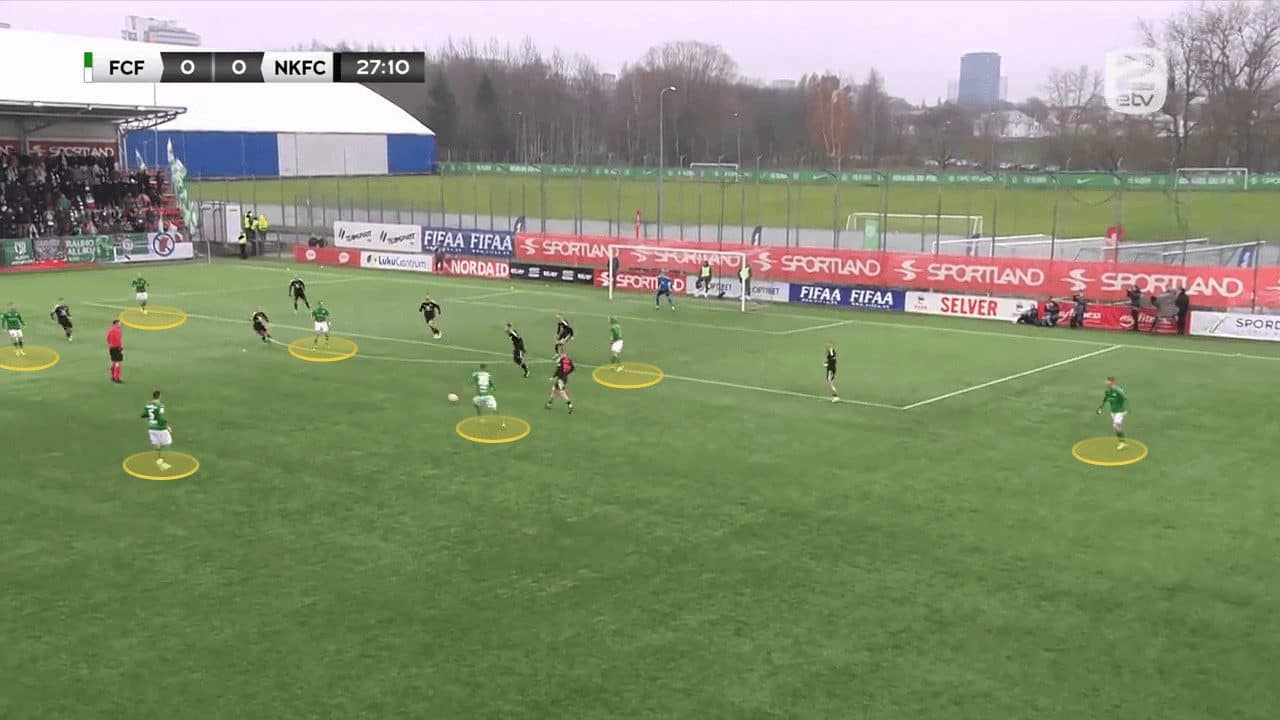
He preferred to play predominantly with a four-man defensive line, with his favoured setups being 4-4-2 or 4-2-3-1.
They aimed to reach the opposition half and control the game there. The coach would rely on a highly positioned backline who can retain possession at the back. That would happen with the help of one of the midfielders, who would drop deeper and help them circulate the ball and bypass the press. The advanced positioning of the rest of the team allowed them to move the ball quickly to the opposition half.
Their ball progression was built on the proactiveness of the full-backs, who stay relatively high (next or even past the central line) in possession and get involved in the attacking movement. That allowed the goalkeeper and the centre-backs to spread out wide and the rest of the team to move into a more advanced position. Occasionally, the ball-playing centre-back would also move out of position to progress the ball.
As shown in the following sequence, the centre-back progressed with the ball, while the left full-back moved into his position so they don’t leave the zone empty in case they lost possession.
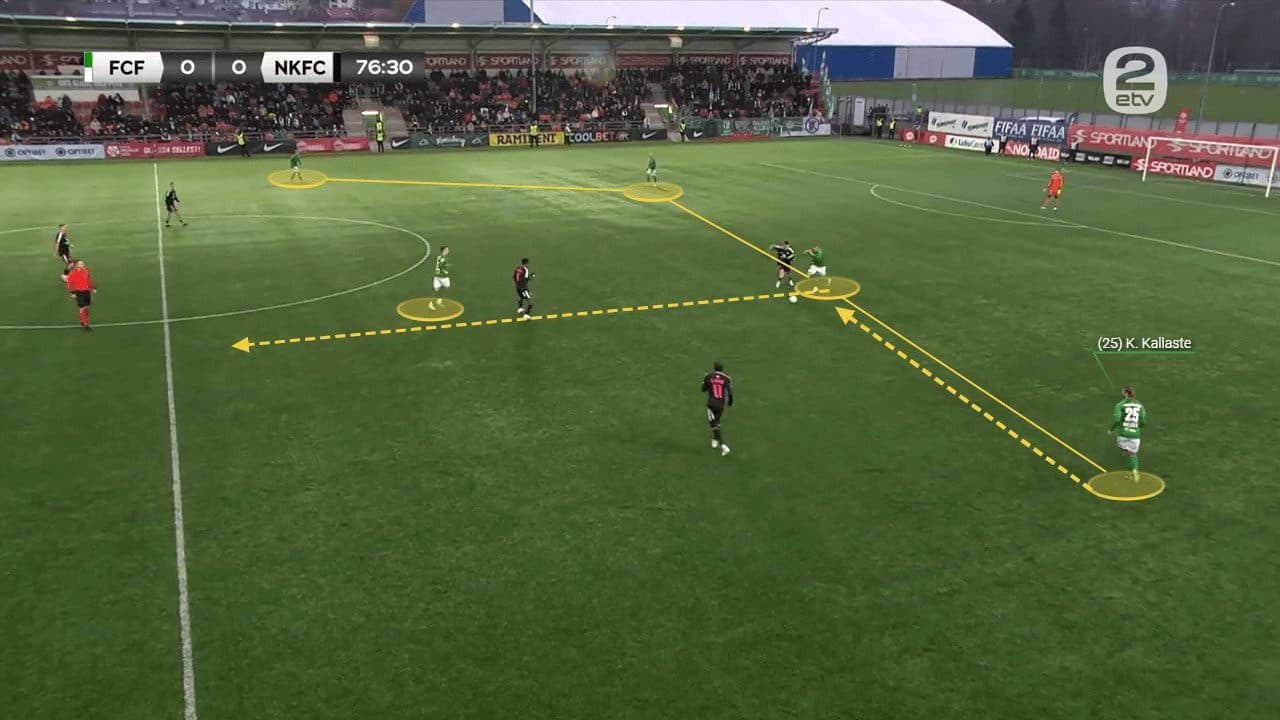
Once the centre defender reached the central line, he could’ve passed the ball to Mihhailov but instead went for a long ball to the left winger, allowing the rest of the team to move forward and outnumber the opposition.
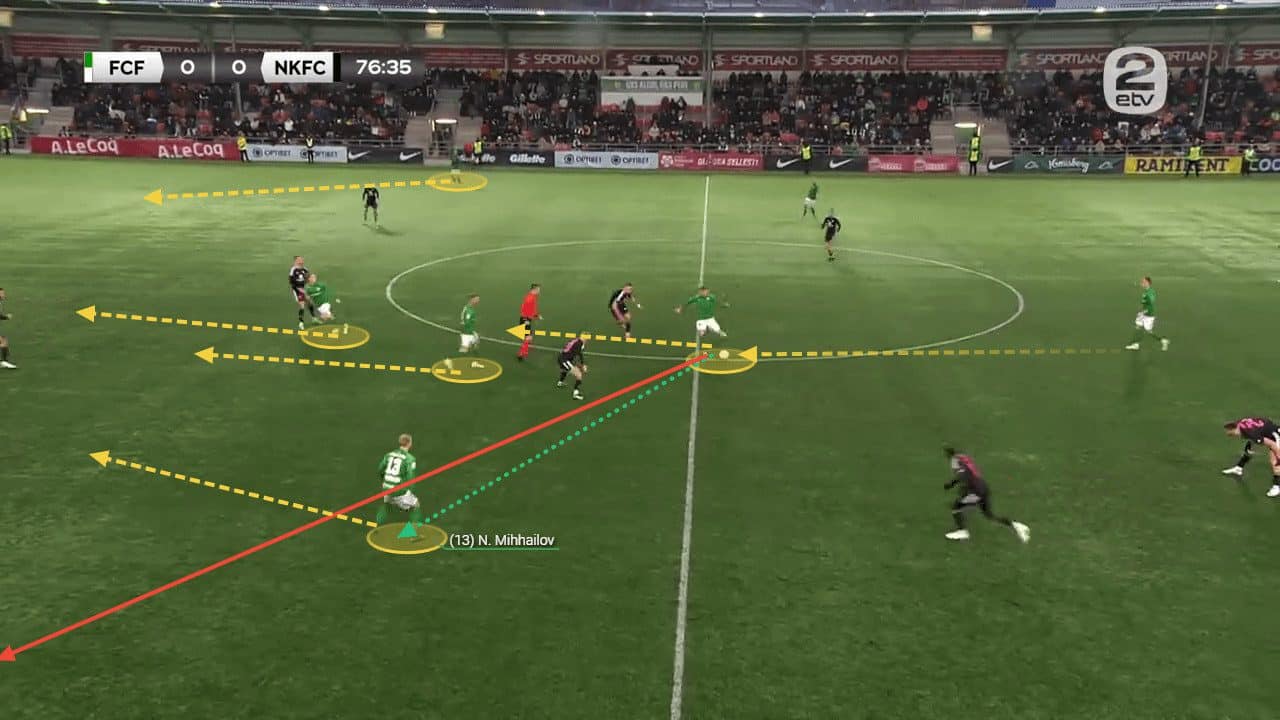
As shown in their 2023 pass map, the intensity of their actions was at the back and the wide areas. They wouldn’t use the central areas to build but, instead, would charge the midfielders with supporting roles in different areas.
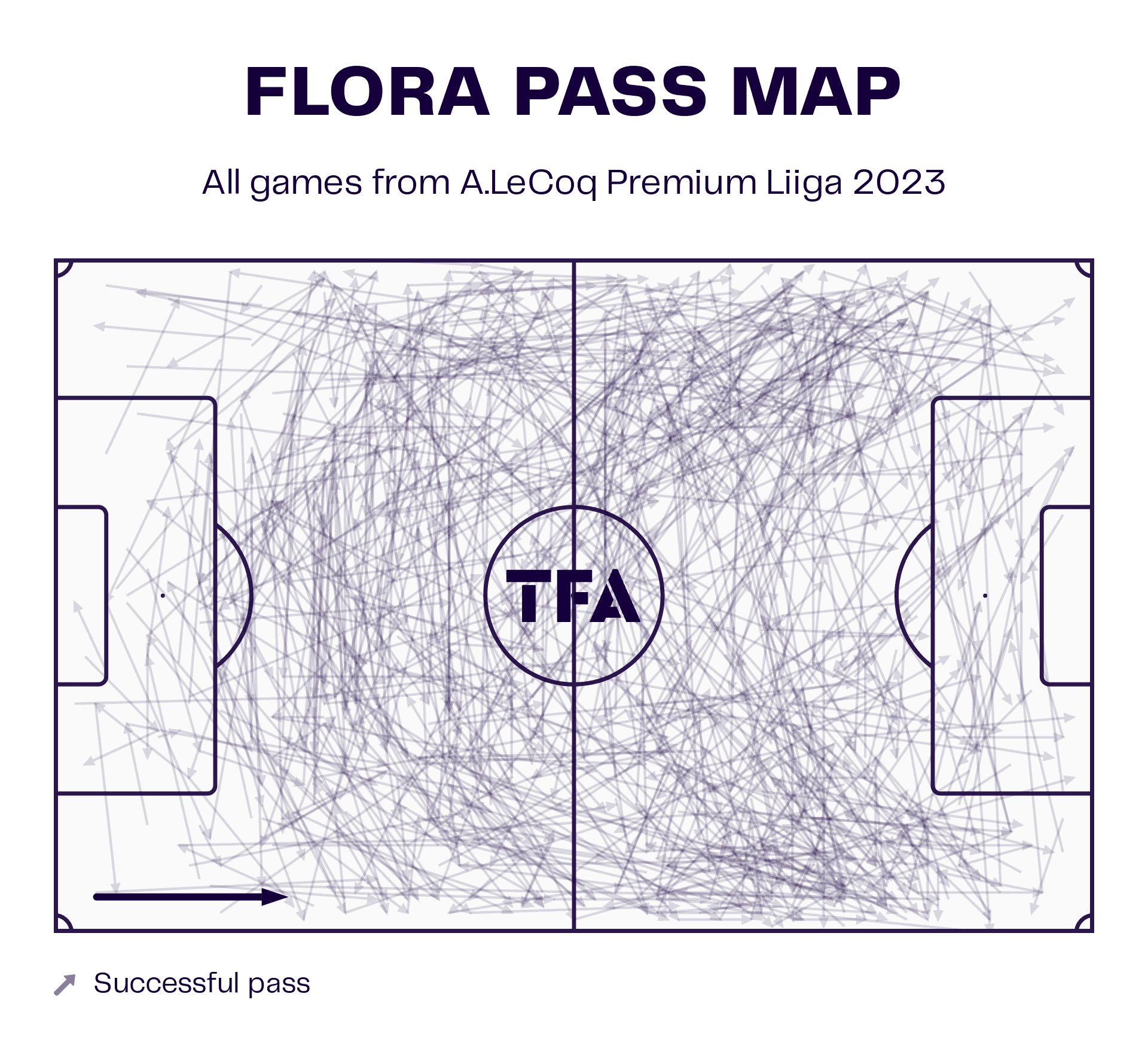
The team would focus on quick movement to progress the ball. Henn’s vision includes frequent passing, constant off-the-ball movement and overall reliance on link-up-play on the flanks to build up successfully. Flora averaged 486.89 passes per game in 2023.
Once the ball reached the opposition half, the team would use movement in the half-spaces to make combinations and drag players out of position.
They’d opt for long diagonal balls directly to the attackers whenever they were tightly pressed and had difficulties breaking the opposition’s lines.
Final third actions
As already mentioned, Henn’s team were required to play attacking football. Flora would try to set the tempo and dominate the games from the start, with the actions happening predominantly in the opposition half.
They would most frequently try to expose their opponents through crossing. As they tended to progress the ball through the wide areas, they aimed to overload the central areas so they could open spaces with their movement and exploit them. Henn would require having at least four or five players in and around the box so they have better chances to receive the crosses and threaten the goal. The team averaged 21.08 crosses per 90 last season.
As shown in the below map, the team would dive deeper in the opposition half and try to cross directly to the penalty area, where they’d usually have multiple players.
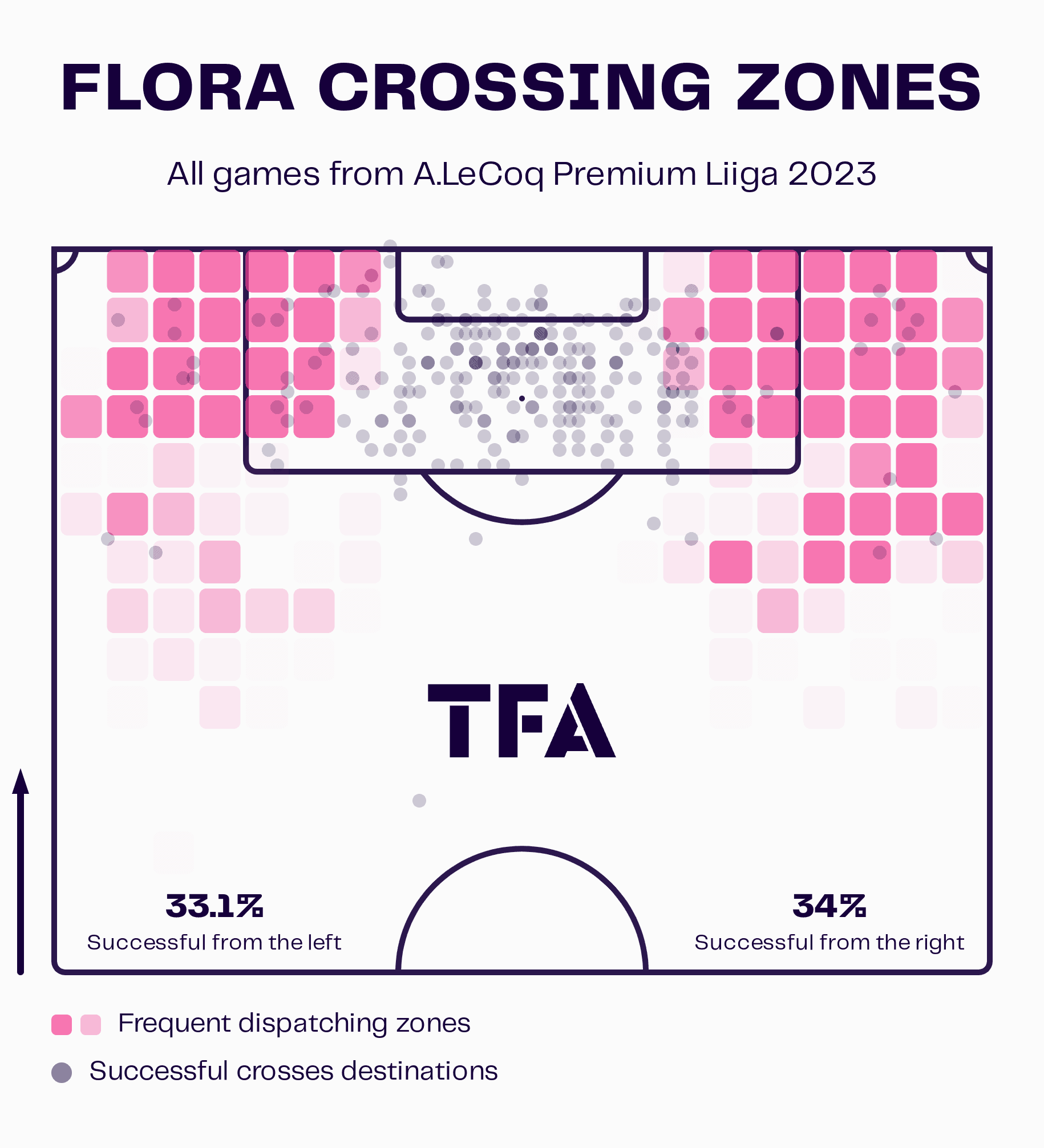
That’s something they applied even when out of possession. Whenever they were out of possession, they would press the opposition and try to recover the ball, most frequently in midfield, while a few players would wait in more advanced positions. Once they had the ball, they’d start their off-the-ball movement towards the goal. They rarely slowed down the tempo and retained possession in their own half in these situations.
In the final third, they relied on the active use of the half-spaces, as they’d often create attacking triangles between the wide players and the other attackers.
In the below situation, Flora’s players formed an attacking triangle on the right completing a few passes to each other to retain possession and to bypass press.
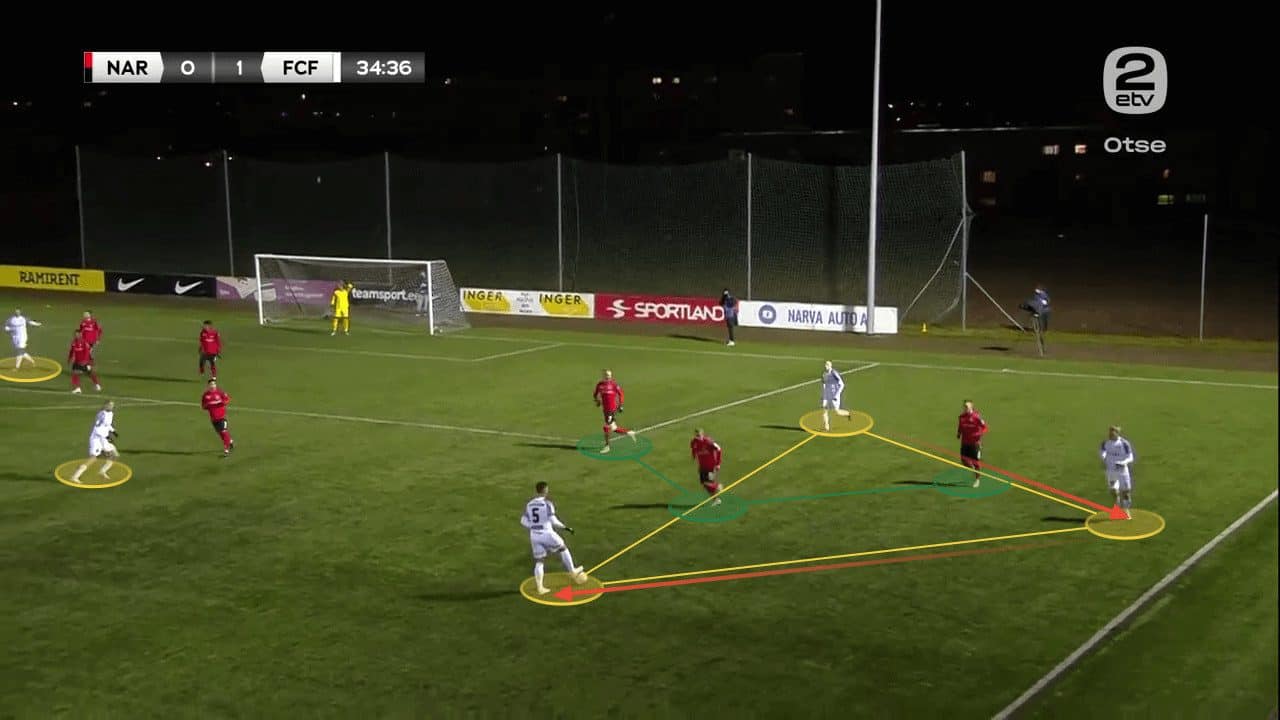
With the pass to the full-back behind the defence, the other two players were able to move to the box and threaten the goal.
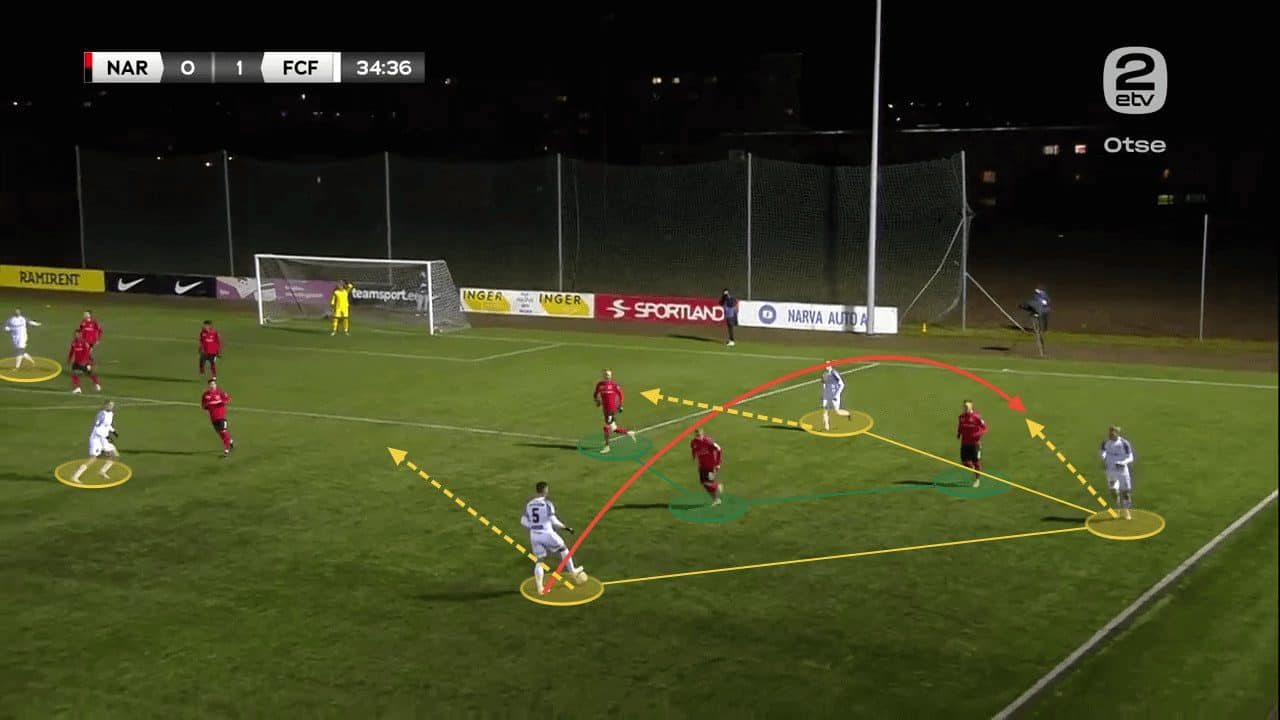
The below map illustrates the intensity of their attacking movement. The full-backs and the wingers would constantly make progressive runs to get the ball to quality areas where they can either cross or combine with their teammates. Their runs with the ball were crucial as they would draw the whole team closer to the goal, allowing them to overload the box.
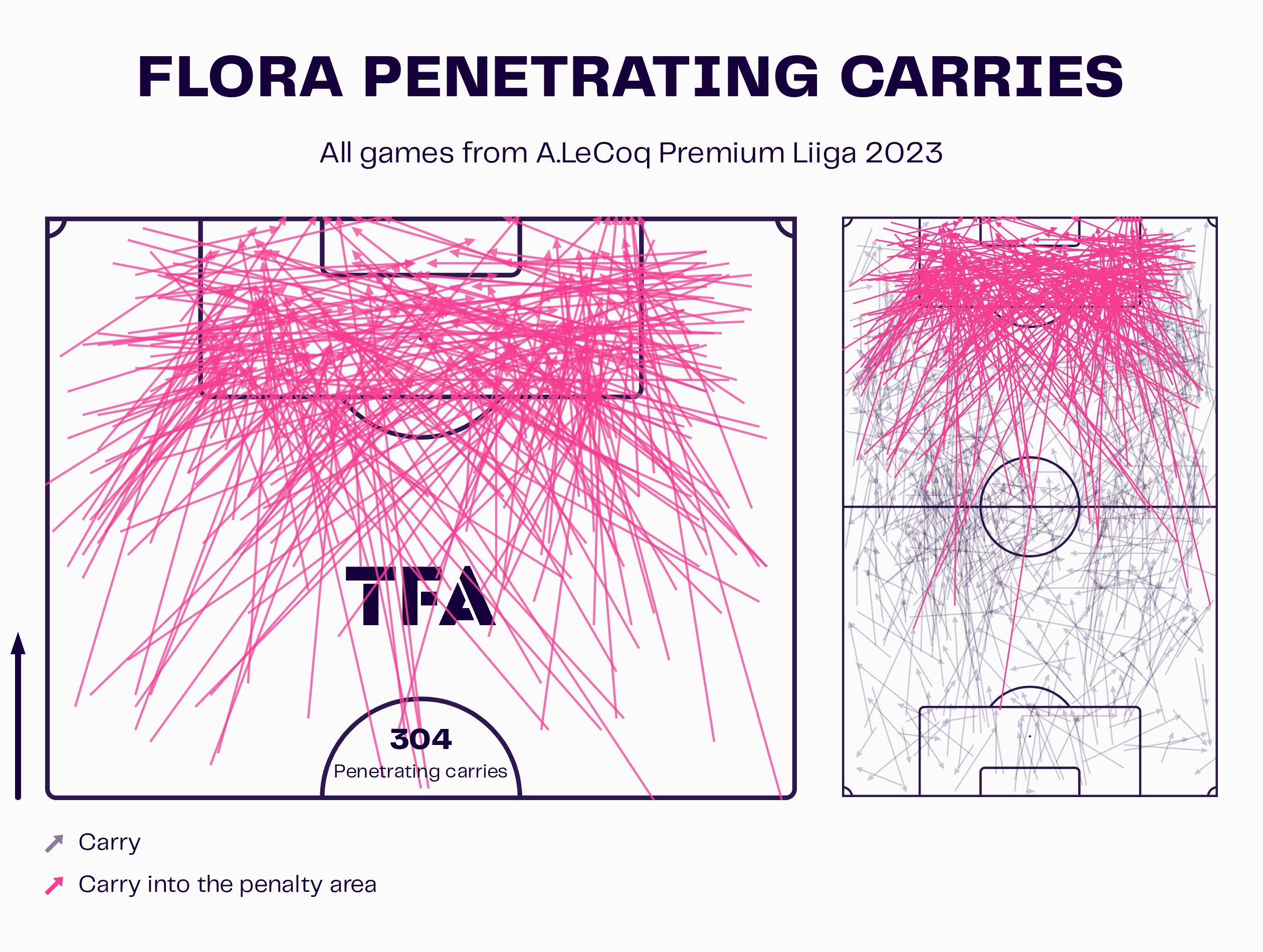
Flora were most efficient, scoring from close distance. However, they would often opt for shots from outside the box, especially when the opposition dropped in a low block. The team scored 10 goals from distance in the league during the 2023 season.
The next map shows their shooting activity. The areas they have most frequently scored from are around the penalty and goal areas. That results from their commitment to crossing and their success from corners.
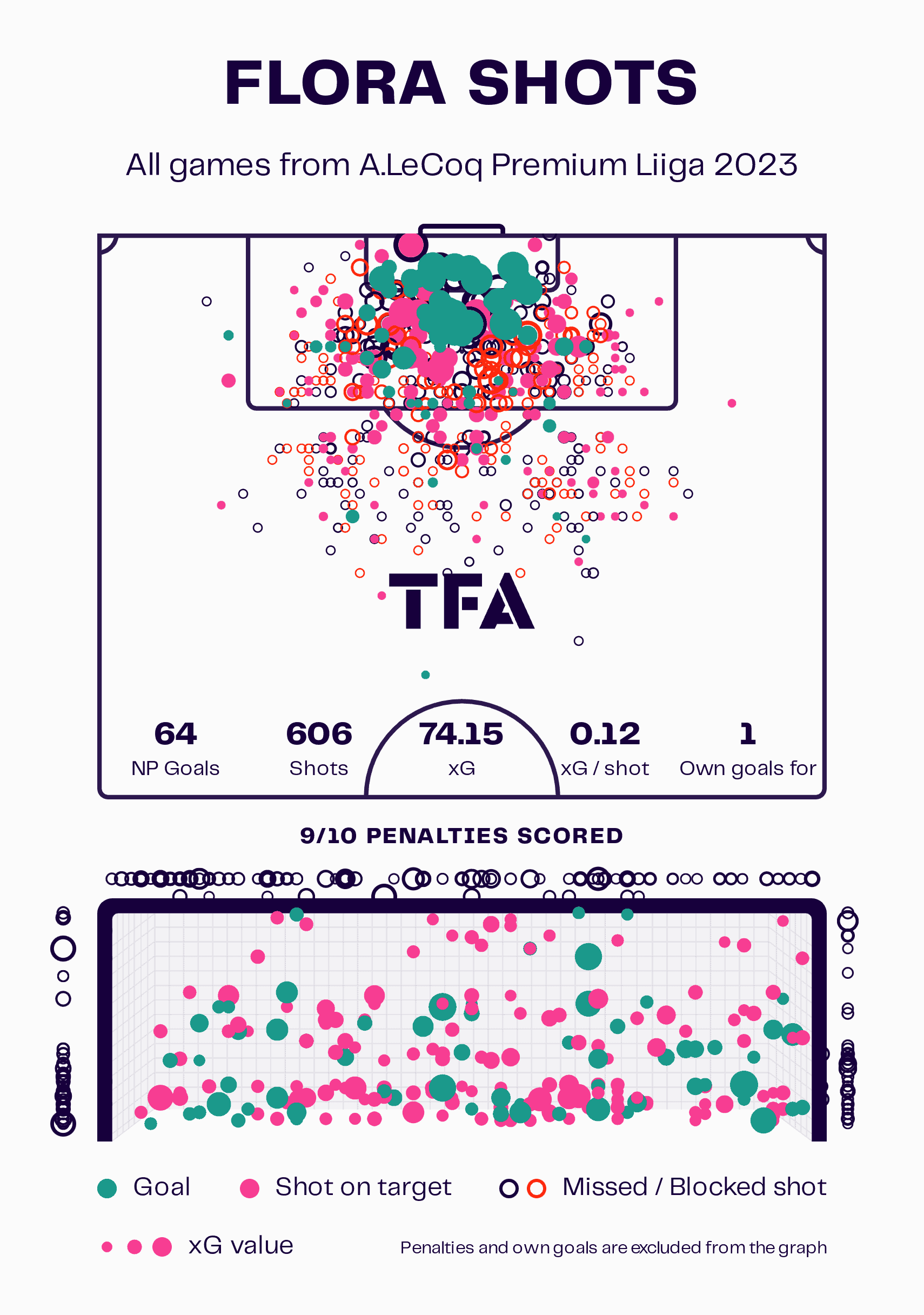
Defensive movement and performance in the defensive third
Henn’s attacking strategy is rather risky. The advanced positioning of the whole team and the active use of the full-backs made them prone to leaving free spaces and being vulnerable on a counter as well.
However, the team managed to split their responsibilities well and achieve balance both in and out of possession. A considerable part of their successful defence was their aim to recover possession.
They would usually press high as a first line of defence, trying to trouble their opponents’ build-up-play. Whenever they failed to recover possession in the advanced areas, their press would help them take advantage in midfield.
They would counter-press actively, which was their way of keeping the opposition away and creating even more goal-scoring opportunities. Thanks to their advanced position and the high number of players in the opposition half, they’d often manage to threaten the goal right after recovering the ball.
The high number of shots (17.11 p90) was usually a result of collective efforts, as they’d still stick to the rule of having multiple players in and around the box.
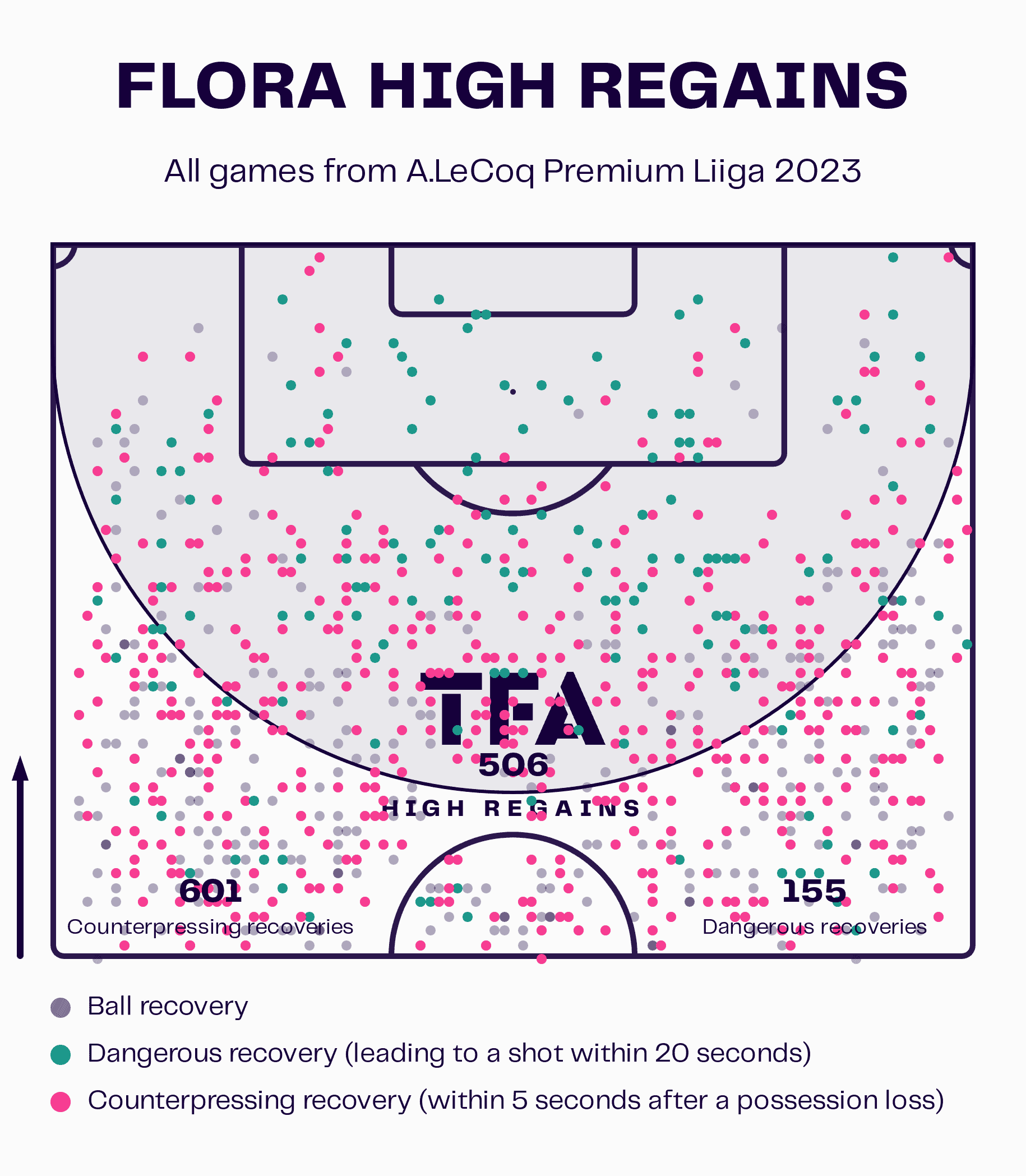
The coach would rely on the players’ individual skills as well. He would use them to their strengths, one of them being holding onto the ball. The team would rarely lose the ball thanks to the wide players’ 1vs1 performance and dribbling abilities.
It wasn’t all perfect for the team defensively, though. Flora often had difficulties dominating in the air, with it costing them conceding dangerous chances. That appeared to be an issue, especially in defending long balls. The combination of their highly positioned players and the inefficiency of their actions in the air would make it difficult to counteract, especially when playing against pacey and skilful players.
Henn has expressed his opinion on the difficulty of splitting between the league and the European tournaments as Flora currently played in Champions League. In Estonia, they played an attacking and dominant football, while he’d switch it up in Europe and play a little more defensively, more focused on counter-attacks. However, staying away from his usual strategy hasn’t gone well for him. The team didn’t feel comfortable staying deeper in their own half, and the pressure on their defensive performance would often force them into mistakes.
The team tended to have more issues in defending closer to their own goal. Usually, the whole team would drop to support the defensive actions, making it easy to assume they would have better coverage in their own third. However, contrary to their actions up high, they often stayed reactive, which would make their timing off. That’s actually what led to conceding six goals from penalty shots, as their hasty actions would result in fouls.
That was partly a result of their insufficient marking, which often allowed some players too much freedom due to mixing man-to-man and zonal marking, depending on the situation. They often didn’t put enough pressure on the ball carrier. That also led to difficulties in defending crosses.
The next image illustrates the above. Flora’s players didn’t mark the ball carrier tightly, which allowed him to pass the ball freely. Respectively, they did the same with the ball received, leaving too much space for him to operate and cross.
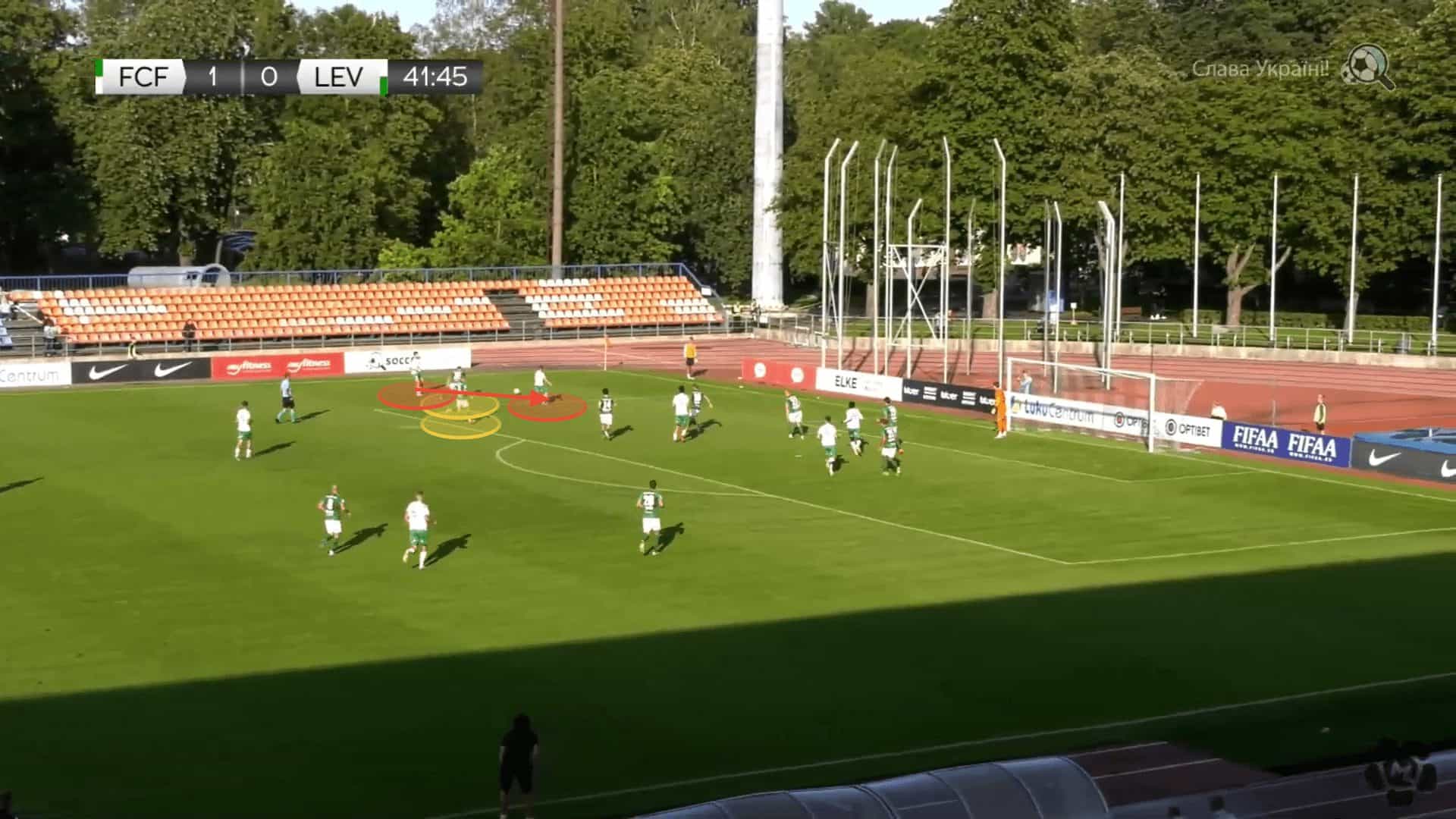
Set-pieces
Flora’s performance in defensive and attacking set-pieces differed. While this was one of their biggest weapons up front, it was one of their weaknesses defensively.
The team conceded only 24 goals last term, six resulting from poor defending of set-plays. The combination of insecure aerial performance and inefficient marking caused them some trouble in front of the goal. With the six conceded penalties, it turns out that despite the low number of conceded goals, they had some troubling tendencies defensively.
Contrary to that, they have been extremely successful in their attacking set-pieces. The team scored 10 goals from corners in the 2023 campaign with absolutely the opposite performance – strong positioning, good runs and dominance in the air.
The players also would get an advantage of the second balls in cases where they couldn’t score from the first try.
Conclusion
As our analysis showed Jürgen Henn’s vision and tactical approach can fit perfectly with many top European clubs looking to develop dominant teams with a distinguished style of play. The 36-year-old’s analytical thinking has helped him develop a winning strategy that includes the players’ tactical and technical preparation.

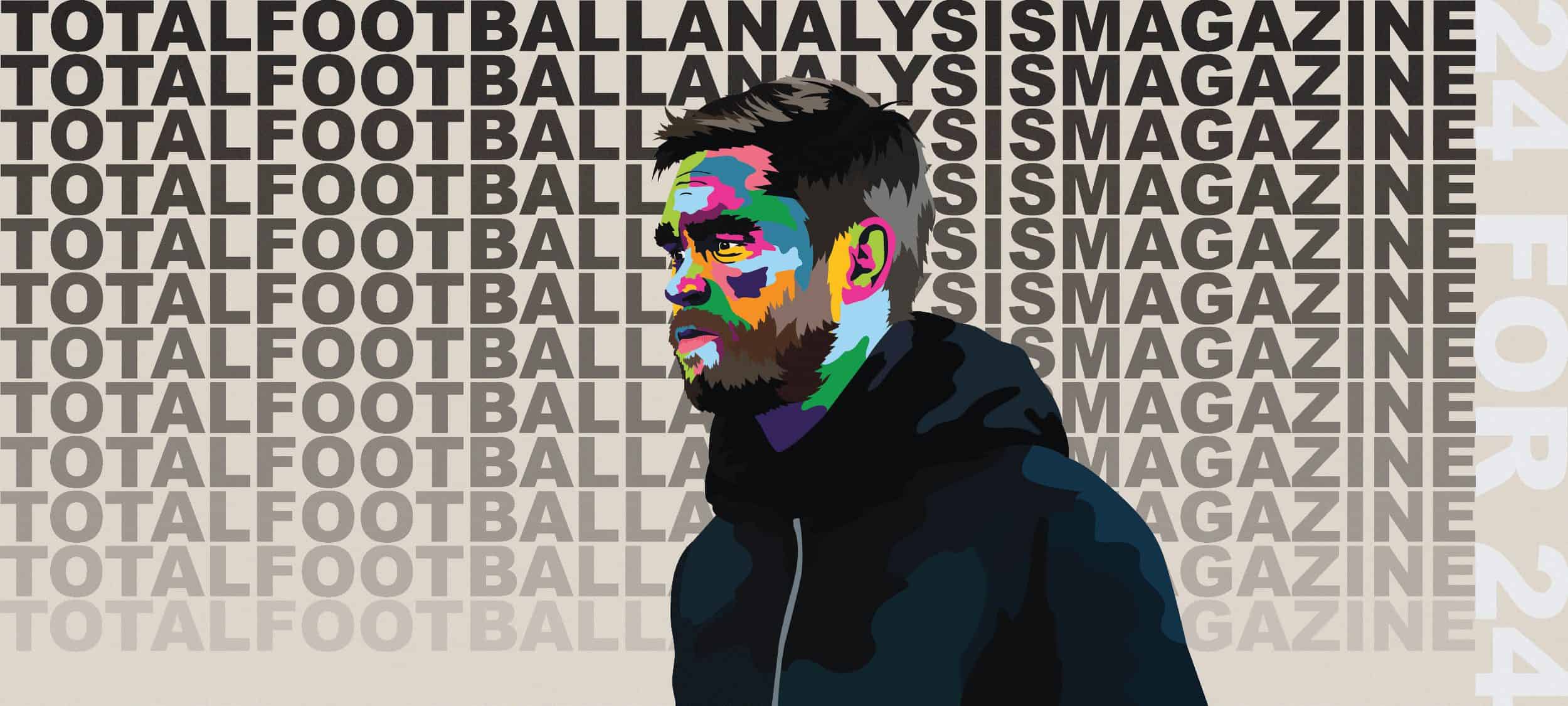




Comments